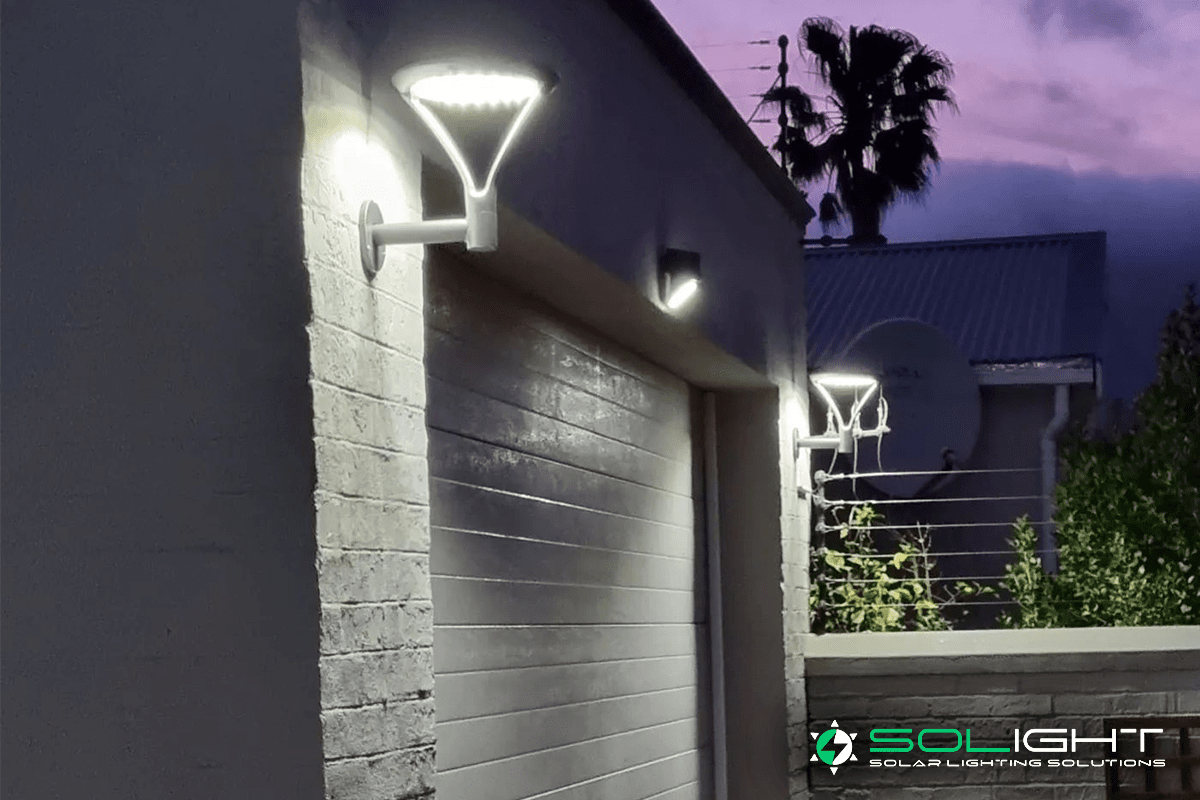PIR sensors are in-built motion detectors, which add functionality and efficiency to garden solar lights. They use infrared technology to sense movement within the scope of the sensor and activate the light.
There are a huge range of applications, and you very likely walk past PIR sensors every day; think automatic shop doors, lights in an office that switch off when the building is empty, or security alarms.
Smart sensors can extend the lifetime of your solar lights by ensuring the battery is only in use when necessary – preserving every full charge for longer, turning decorative lights off when your outdoor space is empty, and avoiding wear and tear.
What Is a PIR Sensor?
PIR stands for passive infrared sensors; they are passive because they work autonomously, without needing manual intervention and do not produce heat or any other outputs that could strain the solar energy battery in garden lights.
Nearly all objects emit infrared radiation, including people, animals and moving vehicles. The sensor picks these up through infrared wavelengths to trigger the lighting.
The basics of PIR sensors include IR-sensitive slots, which have a range of vision depending on where your lights are positioned. For example, if you’d like solar lights to flood your driveway while parking, you could install wall lights on the fence or wall above your driveway or at an angle to cover the drive and adjacent property entranceway.
As soon as any object or person moves through the garden or area of coverage, the sensors recognise the positive differential change. The sensor is engineered inside the lighting unit, so it doesn’t react to temperature fluctuations or humid weather conditions.
Sensors are wireless, as with all our solar powered lights, and do not require maintenance by an electrician or any other specific upkeep; provided the solar panels are cleaned regularly and the unit is in a good spot to recharge through sunlight, the sensor will work perfectly.
What Are the Benefits of Garden Solar Lights With PIR Sensors?
The primary reason solar lights gradually lose capacity is that the battery has reached the end of its useful life. SoLight’s professional-grade solar powered lights last for multiple years, but units will slowly degrade.
Like any appliance or battery-operated equipment, if the lights are left on continuously over the hours of darkness, the battery will be depleted more often and more quickly.
By using your solar lights selectively, you can extend the lifespan of your battery. For example, our Solar Wall Light Mars 2 model has a lithium-ion battery capable of powering the lights for over 1,000 cycles. One cycle covers roughly three days, so the Mars 2 can provide crisp lighting for at least eight years if used continually.
However, the PIR sensor will ensure the solar garden lights remain on standby when your garden, deck, patio, driveway, or other outdoor space is not in use. If the lights are used 75% of the time, you could extend the lifespan of your lighting up to at least eleven years.
Other Advantages of PIR Sensors in Solar Lights
While PIR sensors improve value for money, and the longevity of your solar lights, they also have several other compelling benefits.
- Security lighting: many homeowners and businesses use solar lighting for practical purposes to deter prospective intruders. The automated sensors give the impression that the building is occupied, even if you are away from home.
- Environmental awareness: light pollution can disrupt local ecosystems and affect our natural sleep cycles. By having outdoor lighting that only activates when required, you avoid having a constant light source in your garden overnight.
- Convenience: PIR sensor-controlled lights are perfect if you’d like your lighting to run autonomously and never need to remember to turn it on when the evening approaches.
The solar battery will retain a full charge and turn on as needed but remains on standby the rest of the time, ensuring it lasts for longer, switches on immediately, and provides reliable light whenever required.
Tips on Where to Install PIR Garden Solar Lights
Location is always important for garden solar lights. Units placed in dark, shady spaces will not operate correctly as they may not have sufficient sunlight to reach an optimal battery charge. There are a few other considerations if you select a model with a built-in PIR sensor.
Each light should be installed at least 10 feet (or three metres) from heating vents, as prolonged exposure to high-pressure heat could impact the efficiency of the sensor. It is also worth thinking about areas where your security risks are highest. Many homeowners place a motion sensor above a doorway or entrance, but these can also be a proactive deterrent around rear fencing, patio doors or above garages.
Any area that isn’t in direct view from your residence could potentially be exposed, so automatic solar powered lights can work well above parking bays and outbuildings such as sheds.
Placing garden solar lights slightly higher up, rather than with stakes in the ground, may be advisable if you have pets or wildlife that frequent your garden to prevent the lights from activating continuously. You should also think about anything that might obstruct the sensor’s field of vision; like trees, garden furniture or shrubs. These physical items can block the sensor beam and prevent it from picking up on movement.
Are PIR Sensor Garden Solar Lights Worthwhile?
Picking high-quality solar garden lights with PIR sensors is a great choice if you need dependable garden lights, and are looking for a low-maintenance, automated solution.
PIR sensors ensure your garden solar lights will last as long as possible, extend the lifespan of your solar battery, and ensure your lighting operates flawlessly, providing the bright illumination you need for entertaining, gardening or simply enjoying the fresh air.
For more advice about selecting the right garden solar lights for your home or the tech engineered into a PIR sensor, please contact the solar lighting experts at SoLight at your convenience.





